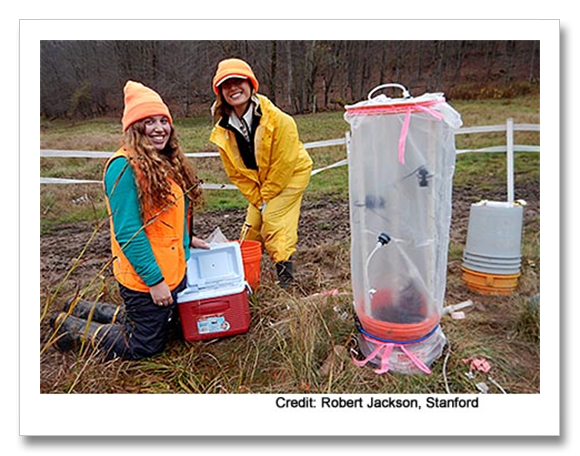Last summer the first of these appeared in the “formerly” frozen tundra of Siberia. When permafrost melts, methane can build up beneath impermeable soils and suddenly erupt. These holes are up to 100 feet wide and seven of them have been identified with many more smaller ones. Four of them have been located and three…

Princeton researchers have been testing abandoned oil wells in Pennsylvania and have revealed some surprising results. What do these findings mean? Stanford estimates that there are three million abandoned wells in the U.S. but this is just a guess. Some of the drilling goes back to the 19th century. Also a guess is how many…
First Published on Truthout, August 27, 2014 (link) The fundamental climate change policy question today is not how much we should reduce carbon dioxide emissions by when, but what will currently proposed carbon dioxide emissions reductions do to our climate in the near-term? In addition, what are the ramifications of short-lived climate pollutants that are…
When permafrost melts, methane can build up beneath impermeable soils and suddenly erupt, apparently. In the formerly frozen tundra of Siberia, this is exactly what seems to have started happening. This 100 foot-wide hole of some obvious but unstated depth could have been caused by a meteorite, missile explosion or perhaps aliens. But this is…
For a generation we have proposed climate pollution control policy based on the 100-year time frame and simple “test tube” lab evaluation of the warming potential of individual greenhouse gases (also called “global warming potential” or GWP). This was once enough to prevent dangerous climate change, but the times have changed. Not only do we…
Methane (and natural gas), and black carbon (soot) are short-lived greenhouse gases relative to carbon dioxide, N20 (nitrous oxide) and CFC (chlorofluorocarbons). Limiting these short-lived greenhouse gases have obvious benefits in reducing warming. Focusing emissions reductions on these gasses also gives the benefit of delaying warming in the short-term, but really only in a world…
Methane: so much news. First, methane from the decomposition of recently grown organic stuff is not really a problem. How ’bout that. It’s fossil methane that’s a problem. Recently grown organic material cycles through the growth/decay process rapidly relative to climate change’s semi-geologic timescale. So it’s factored in to the equation. Burning fossil fuels releases…
The big deal here is that the PETM (Pleistocene Eocene Thermal Maximum) was a massive ocean extinction event. There was a minor extinction event on land, but the big deal happened in the world’s oceans. The global temperature change was only about five degrees and it was short lived (20,000 years.) What likely happened was,…
Sometimes I read these reports and feel that all is lost. But I also read the reports about atmospheric sequestration and geoengineering. I get to see the scientists’ understanding of what may and what may not be feasible. Then I read the economists’ understanding of the world and climate change as we know it. I…
Dr. Katey Walter, from the University of Fairbanks, sees methane like many climate scientists these days. The warming across the planet is concentrated at the poles because of what is called polar amplification. This means that the Arctic is warming even more than the rest of the Earth. In many places the Arctic has already…
